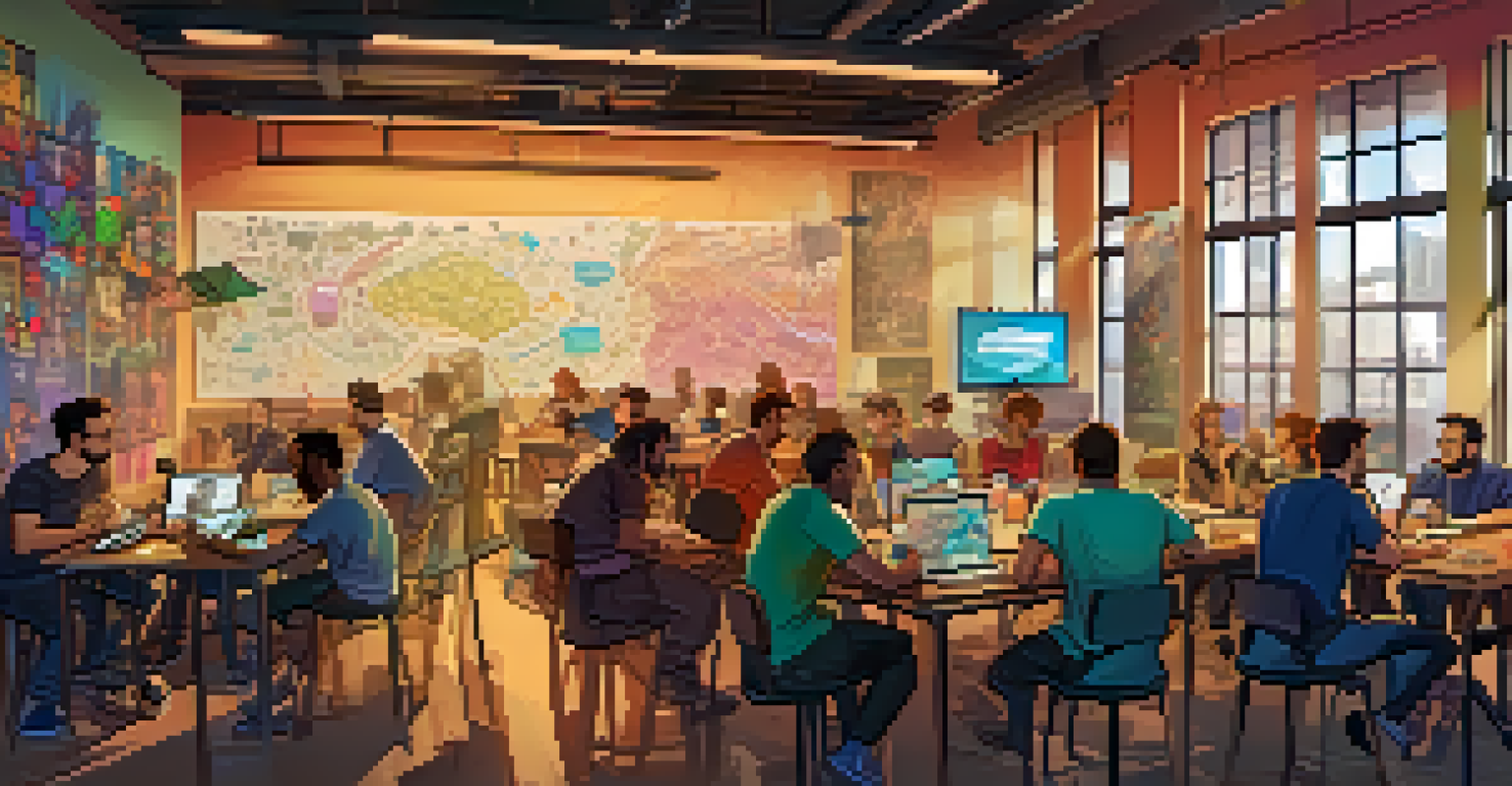Game Development Trends: What to Expect in the Future

The Rise of AI in Game Development
Artificial Intelligence (AI) is revolutionizing how games are developed and played. With AI, developers can create more immersive experiences, allowing NPCs (non-playable characters) to react and adapt to player actions in real-time. For instance, imagine an enemy that learns from your strategies and changes its tactics during a battle, making every encounter unique.
Artificial intelligence is the new electricity.
Moreover, AI can streamline the development process itself. It can assist in generating code, testing games, and even creating art assets, allowing developers to focus on creativity rather than tedious tasks. This not only speeds up production but also gives smaller indie developers a fighting chance in the market.
As AI technology continues to evolve, we can expect games to become smarter and more engaging. Just think of the potential for personalized narratives where the story adapts based on your choices, creating a more tailored gaming experience.
Increased Popularity of Cloud Gaming
Cloud gaming is gaining traction, allowing players to stream games directly from the cloud rather than relying on physical consoles or high-end PCs. This means you can play the latest titles on various devices, from smartphones to smart TVs, as long as you have an internet connection. Imagine playing a graphically intensive game on your tablet while commuting!

This trend also opens the door for developers to reach a broader audience. By removing the barriers of expensive hardware, more people can access and enjoy games. Platforms like Google Stadia and NVIDIA GeForce Now are leading the charge, making it easier than ever to dive into new gaming worlds.
AI Enhances Game Development
AI is transforming game design by creating more immersive experiences and streamlining the development process.
As cloud technology matures, we can expect improvements in latency and streaming quality, making the experience smoother and more enjoyable. This could truly redefine how we think about gaming as a whole, moving away from traditional ownership to a more flexible, subscription-based model.
Emphasis on Cross-Platform Play
Cross-platform play is becoming a standard expectation among gamers. Players want to team up with friends, regardless of the device they’re using. For example, games like Fortnite and Call of Duty have successfully implemented this feature, allowing players to connect seamlessly across consoles, PCs, and mobile devices.
The future of gaming is not just about playing games; it's about experiencing them in new and exciting ways.
This trend reflects a shift towards a more inclusive gaming community. It removes the barriers that once divided players based on their chosen platforms. Imagine being able to play with friends who own different consoles without feeling left out—it's a game-changer, literally!
As more developers embrace cross-platform capabilities, we can expect to see richer multiplayer experiences. This interconnectedness not only enhances gameplay but also fosters friendships and collaboration, making gaming a more social activity.
Expansion of Virtual and Augmented Reality
Virtual Reality (VR) and Augmented Reality (AR) are no longer just buzzwords; they are transforming the gaming landscape. VR immerses players in entirely virtual worlds, while AR overlays digital elements onto the real world, leading to innovative experiences. Think of games like Pokémon GO, which seamlessly blended the real world with digital creatures.
As technology advances, we can expect more realistic graphics and interactions in VR and AR games, creating even more engaging experiences. Imagine stepping into a game where you can truly feel like a hero, battling dragons or solving puzzles with friends in your living room.
Cloud Gaming Expands Accessibility
Cloud gaming allows players to access games on various devices without needing expensive hardware, broadening the gaming audience.
The potential for these technologies extends beyond traditional gaming. They can be used for educational purposes, training simulations, and even therapy, illustrating the versatility and future potential of VR and AR in various fields.
The Shift Towards Indie Game Development
Indie game development is thriving, fueled by accessible tools and platforms. Developers no longer need big budgets to create captivating games, thanks to engines like Unity and Unreal Engine. This democratization of game development allows for unique and innovative ideas to flourish, often leading to unexpected hits.
Indie games often focus on storytelling and artistic expression, offering players experiences that mainstream titles may overlook. Games like Hollow Knight and Celeste have garnered critical acclaim for their creativity and emotional depth, showing that great gameplay doesn't always require a massive budget.
As more indie developers gain recognition, we can expect a diverse range of games that challenge conventional norms. This trend not only enriches the gaming landscape but also encourages larger studios to take risks and explore new ideas.
Sustainability in Game Development
Sustainability is becoming a crucial consideration in game development. As awareness of climate change grows, developers are looking for ways to minimize their environmental impact. This includes everything from reducing energy consumption in data centers to using sustainable materials for physical game copies.
More companies are also prioritizing corporate social responsibility by supporting eco-friendly initiatives and promoting awareness through their games. For instance, some games now include themes around conservation or environmental awareness, encouraging players to think about their ecological footprint.
Indie Games Rise with Innovation
The indie game development scene is flourishing, leading to unique storytelling and creative gameplay that often challenges mainstream titles.
As the gaming industry embraces sustainability, we can expect a shift in consumer expectations as well. Gamers are increasingly interested in supporting companies that align with their values, making sustainability not just a trend but a necessary focus for the future.
Innovations in Game Monetization Strategies
The way games are monetized is evolving, moving beyond traditional pricing models. Free-to-play games with in-game purchases have become common, allowing players to access content without upfront costs. This model provides developers with a steady revenue stream while keeping the game accessible to a wider audience.
However, this shift has sparked conversations about fairness and ethics in monetization. Players are becoming more discerning, demanding transparency and value in in-game purchases. As a result, developers must navigate these waters carefully, balancing profit with player satisfaction.

In the future, we may see more innovative monetization strategies, such as subscription services or pay-what-you-want models. These approaches could redefine how we think about paying for games, making it a more player-centric experience.